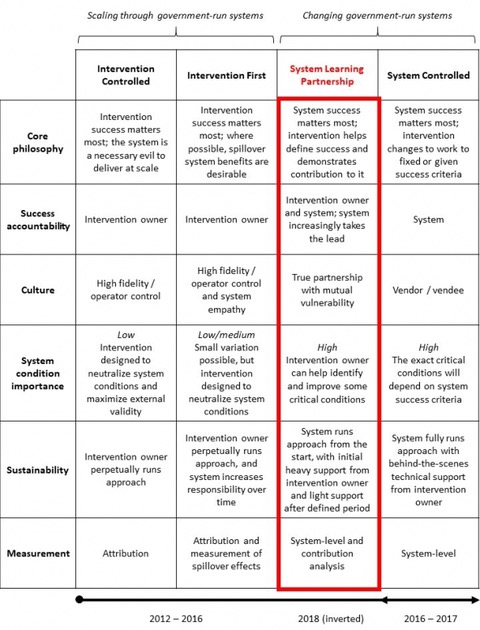Marla Spivack
World Bank
Blog
Existing systems are designed to reward process compliance and expansion and do not provide encouragement for seeking new and better learning practices, stifling innovation. NGOs—free from many of the political and operational constraints faced by governments—can have an easier time experimenting with new ways of working. However, whether they decide to work completely outside the government (and simply need legal permission to operate) or if they aim to have their program taken up and implemented by government itself, NGOs with ambitions to achieve large scale impact need to engage with the government.
STiR, an organization that aims to improve learning outcomes by increasing teacher motivation, has experimented with a variety of models along this continuum of government engagement. In a recent article in the Stanford Social Innovation Review, their CEO Sharath Jeevan and several of his colleagues classify various approaches of engagement with government (see the table below from their piece). STiR hopes that “system learning partnerships” will allow them to be a catalyst for innovation within government. The organization adopted this model in 2018, and I'm looking forward to following the progress, and learning from their experience, as they pursue it.

Source: STiR article on the Stanford Social Innovation Review website
RISE blog posts and podcasts reflect the views of the authors and do not necessarily represent the views of the organisation or our funders.